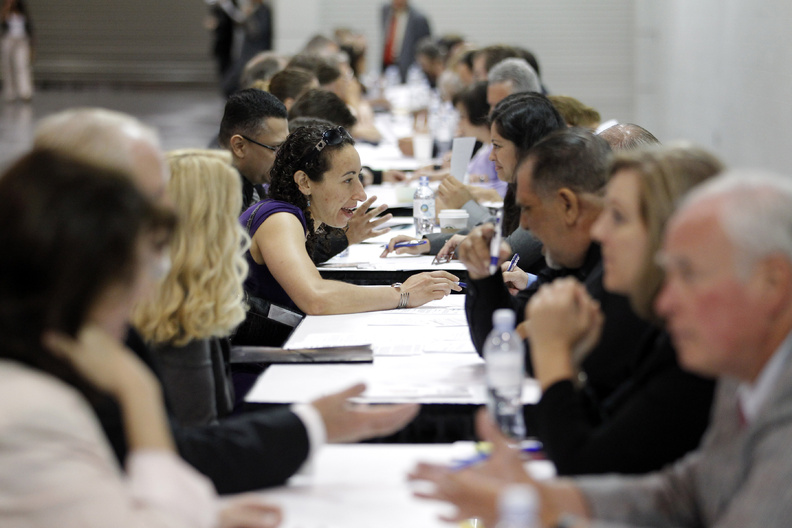Friday’s dismal jobs report is another reminder that the U.S. economy is stuck, if not headed in reverse.
Employers added a modest 80,000 jobs in June, falling short of the 100,000 gain that economists surveyed by Bloomberg News had predicted. That rate is nowhere near the pace needed to lower 8.2 percent unemployment.
The lackluster job growth comes on the heels of an Institute for Supply Management report last week showing that the manufacturing sector had contracted in June for the first time since July 2009. Household spending, central to powering the economic recovery, fell slightly in May.
The silver lining is that private employers added jobs for the 28th straight month and other indicators of the economy’s health — number of hours worked, hourly wages and temporary jobs — picked up slightly. The jobless rate remained unchanged, and fewer people stopped looking for work.
Still, it’s clear the recovery, which started out strong in the first half of 2012, is stagnating. Many economists and investors are looking to the Federal Reserve, which last month extended its bond-buying program in the hopes of flooding the market with cheap credit. Chairman Ben Bernanke has said that the Fed remains open to doing more if the economy shows signs of a severe slowdown. Analysts say Friday’s jobs report is a flashing neon sign for further Fed action.
But this isn’t a problem that only the Fed can — or should — solve. As Bernanke has said, monetary policy can only do so much to break the logjam preventing consumers from spending and businesses from investing and hiring. Look no further than Thursday’s collective market shrug after three central banks in Europe and China took uncoordinated steps to stimulate borrowing and spending.
Elected officials in both parties must take steps to get the economy growing faster. What’s needed has been clear for a long time: Resolve the uncertainty about expiring tax breaks and looming spending cuts; create short-term fiscal stimulus; and outline a more sustainable long-term fiscal path.
President Obama, on a two-day campaign bus tour through Ohio and Pennsylvania, said Friday that it’s “still tough out there.” He could help make it easier by taking the lead to clear up the fiscal confusion.
We suggest a short-term stimulus package, such as a temporary tax rebate or expansion of the payroll tax cut, and a clear articulation of the coming $600 billion in spending cuts and tax increases he’s willing to accept. Obama could also make another stab at negotiating with Congress over a long-term deficit reduction plan.
None of this will be easy, and a heated campaign season only makes it tougher. But policymakers must put Americans ahead of personal and party ambitions — yes, even in an election year.
Copy the Story Link
Send questions/comments to the editors.



Success. Please wait for the page to reload. If the page does not reload within 5 seconds, please refresh the page.
Enter your email and password to access comments.
Hi, to comment on stories you must . This profile is in addition to your subscription and website login.
Already have a commenting profile? .
Invalid username/password.
Please check your email to confirm and complete your registration.
Only subscribers are eligible to post comments. Please subscribe or login first for digital access. Here’s why.
Use the form below to reset your password. When you've submitted your account email, we will send an email with a reset code.